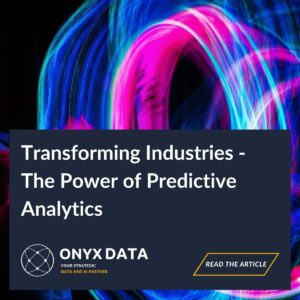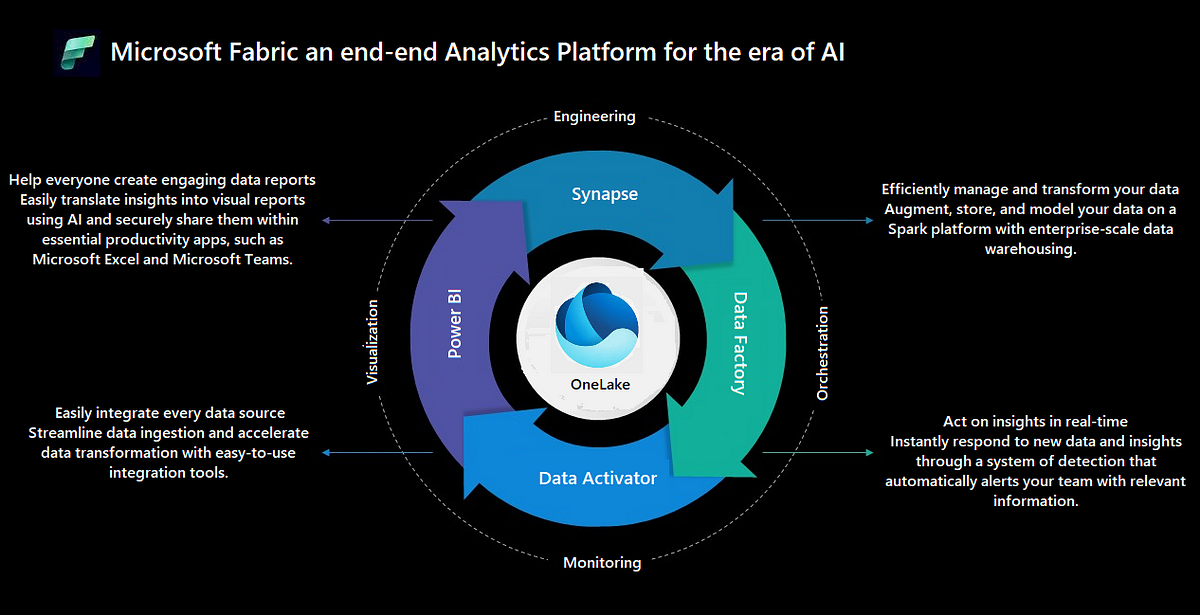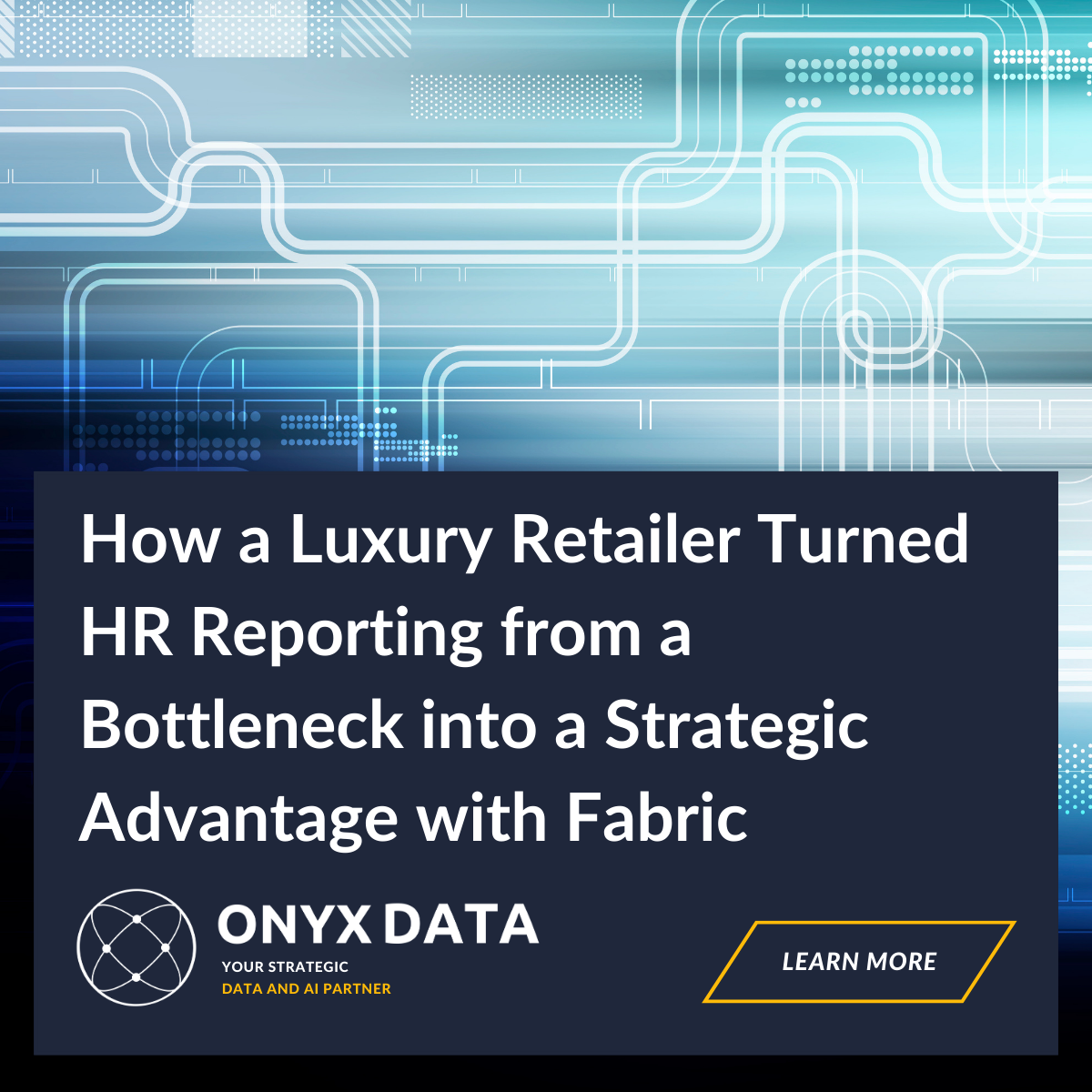Transforming Industries – The Power of Predictive Analytics

Predictive analytics has been more than just a buzzword in recent years—it’s a game-changer. As we transition from merely understanding past trends to anticipating future outcomes, a new world of possibilities opens up. Imagine a business strategy enhanced by data that not only explains what happened but predicts what will happen. It’s like having a crystal ball with which you can glimpse into your industry’s future. That is the realm of predictive analytics: using data, statistical algorithms, and machine learning techniques to identify the likelihood of future outcomes based on historical data. This leap from descriptive to predictive insights is revolutionising how businesses operate.

The Role of Predictive Analytics in Transforming Industries
Having immersed myself in the world of predictive analytics, I’ve witnessed first-hand how it’s reshaping industries, a sentiment echoed in industry insights. Take healthcare, for example—no longer bound by reactive methods, it now benefits from early disease prediction and personalised treatment plans. Predictive analytics has empowered healthcare professionals to forecast patient admission rates, optimising resource allocation and improving patient care quality. In finance, predictive analytics is revolutionising fraud detection, risk management, and customer segmentation, allowing firms to offer tailored financial products and services. Retail, on the other hand, is undergoing its own renaissance. By leveraging predictive analytics, retailers can anticipate product demand, optimise inventory levels, and personalise marketing strategies. You can read more about how predictive AI is transforming industries here.
A compelling case study is how Target used predictive analytics to identify buying patterns in customer data, successfully pinpointing new parents among their shoppers before even the grandparents knew. Such power of prediction enhances customer experience and solidifies brand loyalty. But let’s not just stop there. Predictive analytics identifies trends and patterns within the mass of unstructured data, turning noise into symphonies of insight. This transformative potential is what is now guiding major strategic decisions across various sectors, as discussed in this LinkedIn article.
Microsoft’s Impact on Data Analytics
When it comes to data analytics, Microsoft has emerged as a titan. Their suite of tools is an industry benchmark, shaping the way organisations harness data. Microsoft Power BI, for instance, offers an intuitive platform for visualising and sharing insights, democratising data analysis across organisations. Azure Machine Learning provides developers with robust algorithms to build and deploy predictive models, seamlessly integrated within their existing digital ecosystems. Meanwhile, Dynamics 365 brings predictive analytics directly into CRM and ERP functionalities, streamlining business processes and improving customer experiences.
Microsoft’s vision is to deeply integrate data analytics into every aspect of business decision-making. This allows organisations to transform data into actionable insights, facilitating innovation and competitive advantages. I truly believe Microsoft’s holistic approach to data analytics is setting the stage for accelerated industry transformation.
Introducing Microsoft Fabric
Enter Microsoft Fabric—a game-changer in the data integration and management sphere. Microsoft Fabric is a comprehensive data integration platform designed to simplify and enhance the data management process. Its capabilities are vast, enabling the seamless integration of diverse data sources into a unified environment for comprehensive analysis.
The significance of Microsoft Fabric in predictive analytics is profound. By using Microsoft Fabric, businesses can streamline their data management, allowing for more accurate predictive models. It enhances data integration, making it easier to pull data from various sources, cleanse it, and prepare it for analysis—a crucial step in developing effective predictive models. The real advantage of Microsoft Fabric, however, lies in its simplicity. It offers an intuitive interface that demystifies data management complexities, empowering analysts and decision-makers to focus on deriving insights rather than getting lost in technicalities.
Understanding Microsoft Fabric Pricing
Navigating the pricing models of data integration tools can often feel daunting. Microsoft Fabric, however, is designed with flexibility in mind, offering pricing models that accommodate various organisational needs. Whether you’re a startup looking to scale your data operations or an established enterprise seeking robust integration solutions, Microsoft Fabric offers value at every price point.
The value proposition of Microsoft Fabric is clear—it provides a scalable and efficient solution that evolves with your business. Compared to competitors, Microsoft Fabric stands out by offering a comprehensive feature set within a competitive pricing framework. This is critical for organisations today, as it ensures that they can leverage powerful analytics capabilities without staggering financial commitments.
Predictive Analytics Case Studies with Microsoft Tools
Real-world applications often speak louder than theory. With Microsoft’s analytics tools, numerous businesses have transformed their decision-making processes and operational efficiencies. For instance, a global retail chain utilised Microsoft Power BI along with Azure Machine Learning to enhance its supply chain logistics, significantly reducing costs and improving delivery times. The tools facilitated more informed decision-making, enabling predictive maintenance schedules and demand forecasting.
Another success story involves a financial institution that leveraged Microsoft’s analytics tools to improve its risk assessment protocols. By integrating Dynamics 365 with predictive models, the firm reduced its non-performing loan ratio, achieving a considerable return on investment and setting a new standard for risk management practices.
Future Trends in Predictive Analytics and Conclusion
As we look to the future, the trajectory of predictive analytics is immensely promising. With advancements in artificial intelligence and machine learning, the capabilities of predictive models will only become more refined. Imagine AI-driven predictive analytics tools that not only anticipate outcomes but offer strategic recommendations, radically augmenting human decision-making.
In conclusion, predictive analytics is not just about making better business decisions—it’s about paving the way for a future where industries are empowered to innovate and excel in a digital world. The power of predictive analytics lies not just in data but our ability to harness it for future transformation.






